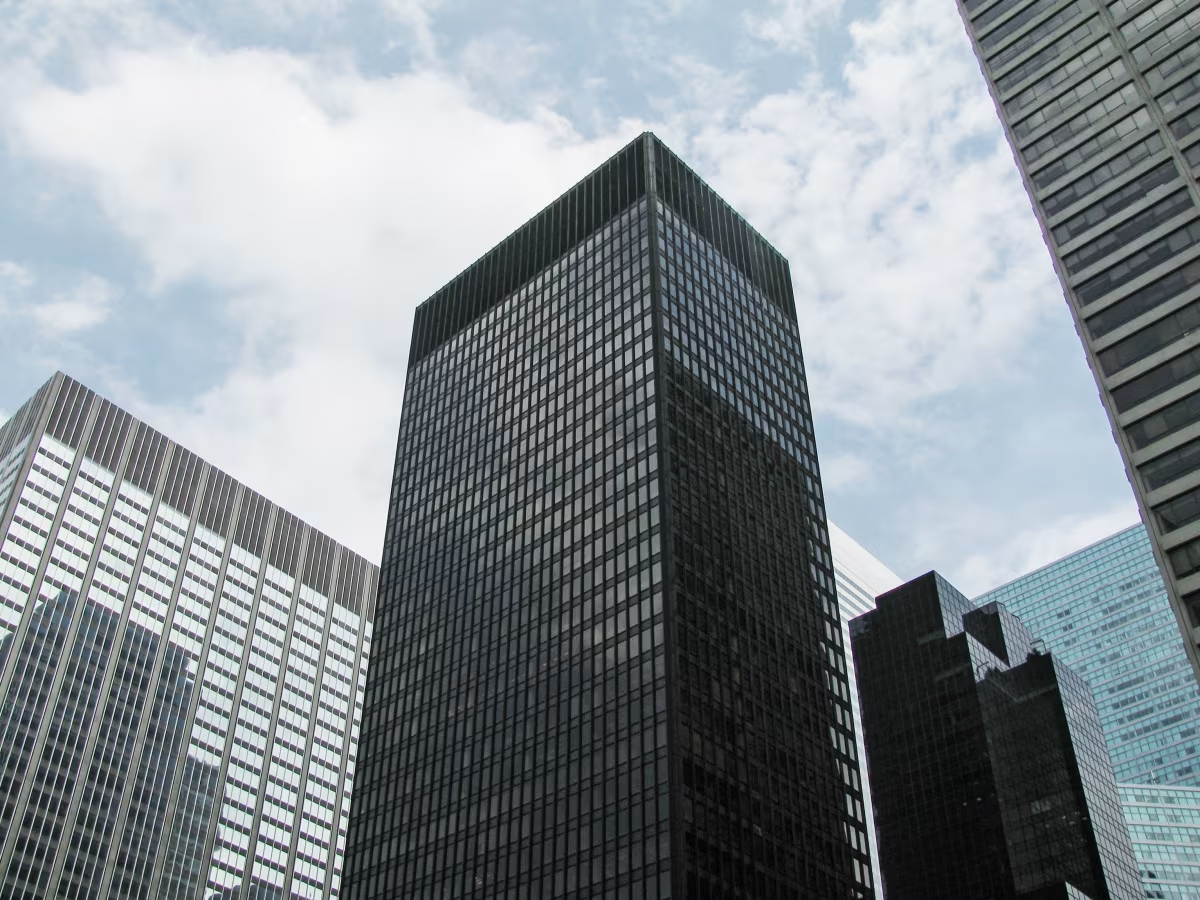W. R. Grace Building vs Seagram Building


Comparing the W. R. Grace Building and the Seagram Building is interesting because they both rise in New York, NY, yet they were conceived by two different design teams, Skidmore, Owings & Merrill and Mies van der Rohe, and were completed at different points in time. They were finished more than a decade apart.
This contrast within the same city allows us to see how different creative minds interpreted the evolving needs of New York across time.
Let's take a closer look!
Height & Size
The W. R. Grace Building is clearly the larger tower of the two, both in terms of height and number of floors. It rises to 630ft (192m) with 50 floors above ground, while the Seagram Building reaches 515ft (157m) with 38 floors above ground.
Of course, each project may have faced different briefs or regulatory constraints, which we don't really know about and could also explain the outcome.
Architectural Style
Both the W. R. Grace Building and the Seagram Building were designed in line with the aesthetic conventions of the International Style style.
The W. R. Grace Building was designed at a moment when the International Style style was already in decline, making it more of a lingering expression of the movement. In contrast, the Seagram Building style was already in decline, making it more of a lingering expression of the movement. In contrast, the Seagram Building was built when the style still carried greater cultural weight.
Uses
Both the W. R. Grace Building and the Seagram Building were designed to serve as commercial towers, and that has remained their main use since their completion, serving similar roles in the urban fabric.
The W. R. Grace Building also provides 185 parking spaces.
Structure & Facade
Both the W. R. Grace Building and the Seagram Building rely on a Frame structural system.
A frame structure uses a grid of columns and beams to carry the building's loads. This frees the walls from structural duties, allowing for flexible floor plans and larger windows.
They also employ the same type of facade, a Curtain Wall facade.
A curtain wall is a non-load-bearing facade hung from the structural frame. It is anchored to floor slabs and transfers only its own weight and wind loads, allowing for sleek, glassy exteriors.
| W. R. Grace Building | Seagram Building | |
|---|---|---|
| Skidmore, Owings & Merrill | Architect | Mies van der Rohe |
| 1970 | Construction Started | 1955 |
| 1974 | Year Completed | 1958 |
| International Style | Architectural Style | International Style |
| Commercial | Current Use | Commercial |
| 50 | Floors Above Ground | 38 |
| 2 | Floors Below Ground | 3 |
| 192 m | Height (m) | 157 m |
| 32 | Number of Elevators | 18 |
| Frame | Structure Type | Frame |
| Steel | Vertical Structure Material | Steel |
| Concrete, Steel | Horizontal Structure Material | Reinforced Concrete |
| No | Facade Structural? | No |
| Glass, Stone, Steel | Main Facade Material | Glass, Aluminum |
| NY | State | NY |
| New York | City | New York |
| 1114 6th Avenue | Address | 375 Park Ave |